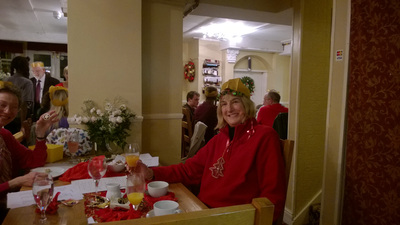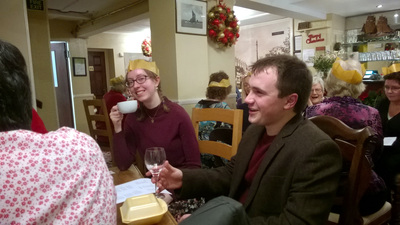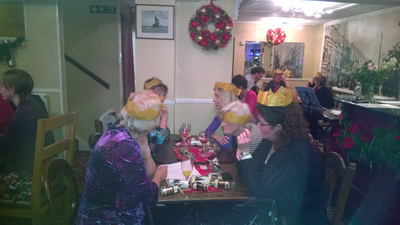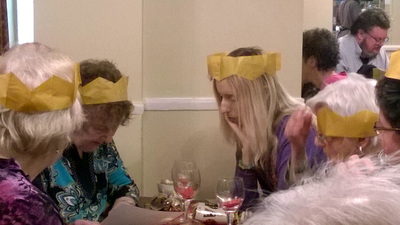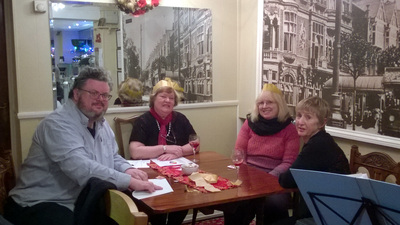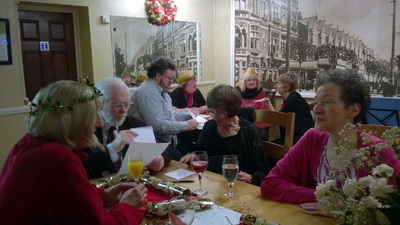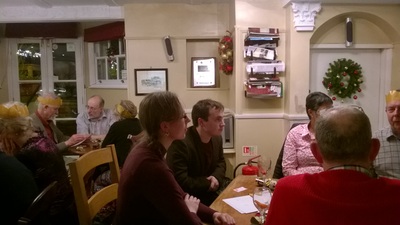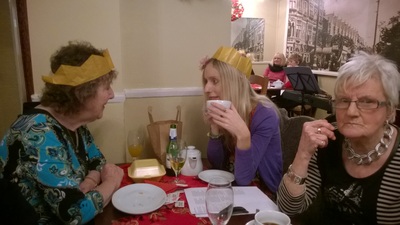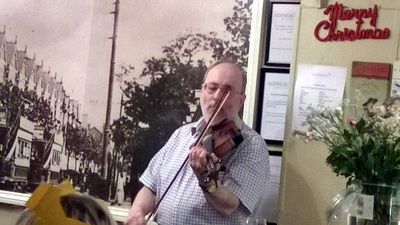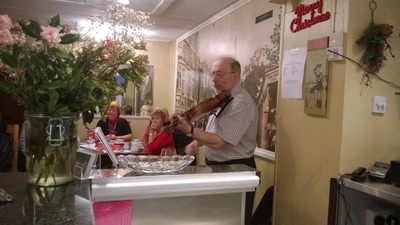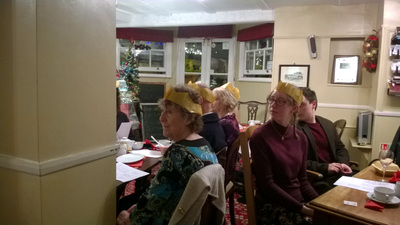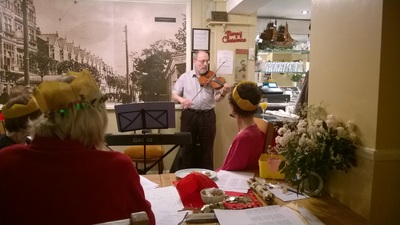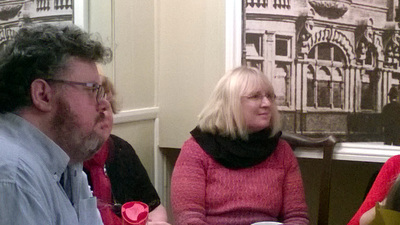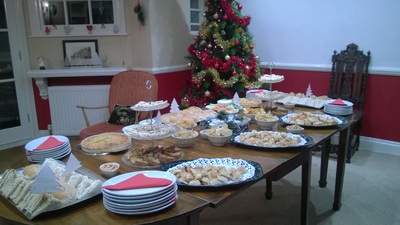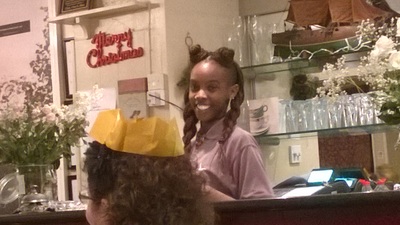On 11th September 2014, four intrepid members of le Cercle Francais de Southend - June, Jackie, Penny, Shirley and Shirley’s husband Paul - set off to visit the small mountain town of Rimont in the heart of the Pyrenees region of Ariège.
They flew from Gatwick to Toulouse to take in the sights there before travelling on the next day by train to Pamiers where they were met by June’s friend Graham and picked up their hire car to drive to Rimont.
Rimont is a small mountain town situated between Saint-Girons and Foix. It grew up as a result of the foundation in 1139 of the Abbey at nearby Combelongue by the local lord, Arnaud d’Autriche Pallas, a German cousin of king Louis VII of France, with the consent of Pope Innocent III. The Abbey was established for the benefit of Arnaud’s third son, who became the first Abbot.
In its heyday the Abbey was home to around 100 monks but by 1680 only 8 remained and the last five were expelled at the time of the French Revolution in 1789. The Abbey controlled lands and gained income from a large area. It owned water-mills at Campagne and Combelongue and the group were very privileged to be able to see the 12th century mill at Combelongue in working order, thanks to the dedicated renovation work over many years of the owner, M. Duval. The group was also given a guided tour of the Abbey and part of its gardens by the current owner.
However, the event that put Rimont into the history books in the 20th century took place on 21st August 1944. German troops, including a battalion from Turkestan, had surrendered at Saint-Girons and were marching east in a column along the main road when a few maquis – resistance fighters – who had come under fire from the German troops a month or so earlier, fired on the column. In an apparent act of revenge, the German troops burned the village of Rimont, killing 11 villagers. The village was rebuilt after the war using local stone and is now a quiet little town with terraced gardens and a pleasant atmosphere.
The group all enjoyed visits to local attractions during their stay such as the market town of Saint-Girons, Saint-Lizier with its 17th century pharmacy and 2 cathedrals, Foix with its castle, lovely shops and reasonable parking, and the prehistoric cave drawings at Niaux. A lunch featuring local cuisine of duck cassoulet was enjoyed at a local restaurant, Chez Victor, courtesy of Phil and Elaine, who unfortunately had to cancel their trip at the last moment.
On Wednesday evening a reception was held at the Town Hall for the group by the Mayor, Councillors and members of the Rimont Cultural Society, where there was an exhibition of photos showing the horrors of the end of war devastation. A charming lady, Giselle, a survivor of those times, told of her memories. Wine and refreshments had been provided for which Penny gave a heartfelt address of thanks and Shirley read a few of her French poems. All in all they were made to feel very welcome and special.
The trip was deemed to be a great success and it is hoped that links will be established to enable further exchanges between the two communities.
They flew from Gatwick to Toulouse to take in the sights there before travelling on the next day by train to Pamiers where they were met by June’s friend Graham and picked up their hire car to drive to Rimont.
Rimont is a small mountain town situated between Saint-Girons and Foix. It grew up as a result of the foundation in 1139 of the Abbey at nearby Combelongue by the local lord, Arnaud d’Autriche Pallas, a German cousin of king Louis VII of France, with the consent of Pope Innocent III. The Abbey was established for the benefit of Arnaud’s third son, who became the first Abbot.
In its heyday the Abbey was home to around 100 monks but by 1680 only 8 remained and the last five were expelled at the time of the French Revolution in 1789. The Abbey controlled lands and gained income from a large area. It owned water-mills at Campagne and Combelongue and the group were very privileged to be able to see the 12th century mill at Combelongue in working order, thanks to the dedicated renovation work over many years of the owner, M. Duval. The group was also given a guided tour of the Abbey and part of its gardens by the current owner.
However, the event that put Rimont into the history books in the 20th century took place on 21st August 1944. German troops, including a battalion from Turkestan, had surrendered at Saint-Girons and were marching east in a column along the main road when a few maquis – resistance fighters – who had come under fire from the German troops a month or so earlier, fired on the column. In an apparent act of revenge, the German troops burned the village of Rimont, killing 11 villagers. The village was rebuilt after the war using local stone and is now a quiet little town with terraced gardens and a pleasant atmosphere.
The group all enjoyed visits to local attractions during their stay such as the market town of Saint-Girons, Saint-Lizier with its 17th century pharmacy and 2 cathedrals, Foix with its castle, lovely shops and reasonable parking, and the prehistoric cave drawings at Niaux. A lunch featuring local cuisine of duck cassoulet was enjoyed at a local restaurant, Chez Victor, courtesy of Phil and Elaine, who unfortunately had to cancel their trip at the last moment.
On Wednesday evening a reception was held at the Town Hall for the group by the Mayor, Councillors and members of the Rimont Cultural Society, where there was an exhibition of photos showing the horrors of the end of war devastation. A charming lady, Giselle, a survivor of those times, told of her memories. Wine and refreshments had been provided for which Penny gave a heartfelt address of thanks and Shirley read a few of her French poems. All in all they were made to feel very welcome and special.
The trip was deemed to be a great success and it is hoped that links will be established to enable further exchanges between the two communities.
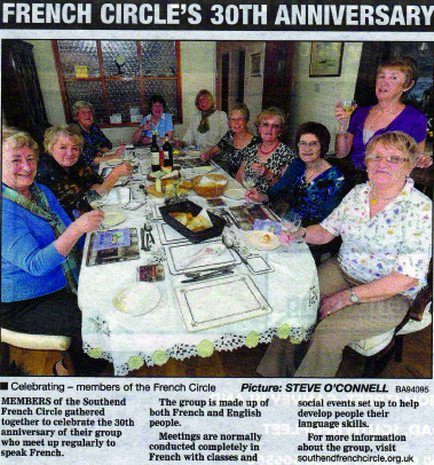
Southend French Circle appeared in the Evening Echo on the 23 May 2014 following a very enjoyable lunch at which some of the members celebrated the group's 30th Anniversary.
Christmas at the Gleneagles

At our 2013 Christmas party at the
Gleneagles Guest House, Southend,
Shirley Baker entertained us all with
one of her poems.
Le Coussin Rose by Shirley Baker
Mon amie m’a acheté un coussin rose
Flourescent tu pourrais dire.
Moi, je préfère les couleurs de la terre
Les nuances sourdes, comme le gris et le vert.
J’ai essayé de cacher le coussin
Sous ses compagnons de teinte plus douce,
Mais bien que je les aie mis à ses côtés et au-dessus
Le rougeoiement passait partout.
Je dois admettre que c’est confortable,
Mais comme mon amie ne le voyait pas
Je ne suis pas une créature de rose vif
Mais j’aime les couleurs du bois.
Ou bien, ai-je un autre moi
Profond sous la confirmité,
Une nuance brillante de rose
Dans mon cœur, bien cache?
©Shirley Baker
Gleneagles Guest House, Southend,
Shirley Baker entertained us all with
one of her poems.
Le Coussin Rose by Shirley Baker
Mon amie m’a acheté un coussin rose
Flourescent tu pourrais dire.
Moi, je préfère les couleurs de la terre
Les nuances sourdes, comme le gris et le vert.
J’ai essayé de cacher le coussin
Sous ses compagnons de teinte plus douce,
Mais bien que je les aie mis à ses côtés et au-dessus
Le rougeoiement passait partout.
Je dois admettre que c’est confortable,
Mais comme mon amie ne le voyait pas
Je ne suis pas une créature de rose vif
Mais j’aime les couleurs du bois.
Ou bien, ai-je un autre moi
Profond sous la confirmité,
Une nuance brillante de rose
Dans mon cœur, bien cache?
©Shirley Baker
